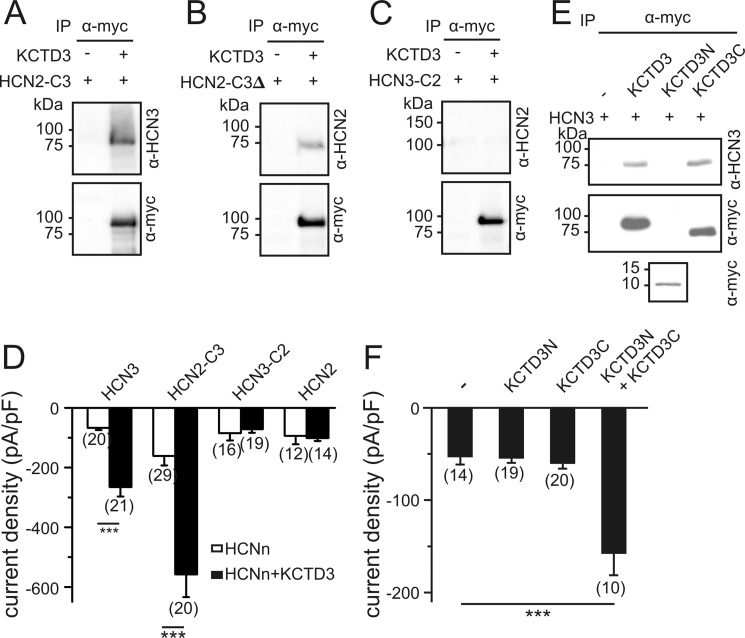FIGURE 6.
Identification of functional domains conferring the stimulatory effect of KCTD3. HCN channel chimeras containing the HCN2 channel core (cytosolic N terminus and transmembrane region) fused to the HCN3 cytosolic C terminus (HCN2-C3) (A) or to the HCN3 cytosolic C terminus lacking the sequence downstream of CNBD (HCN2-C3Δ) (B) or the HCN3 core fused to the HCN2 C terminus (HCN3-C2) (C) were expressed in HEK293 cells in the absence or presence of Myc-tagged KCTD3. Cells were immunoprecipitated with anti-Myc antibody and analyzed in Western blotting with anti-HCN3 (A), anti-HCN2 (B and C) and anti-Myc antibodies (A-C) as indicated. D, current densities at −140 mV of HCN channel constructs in the absence (open bars) and presence (closed bars) of KCTD3. E, HEK293 cells stably expressing HCN3 were transfected with KCTD3-myc, KCTD3N-myc (aa 1–87 containing the BTB-domain), or KCTD3C-myc (aa 88–815). Cell lysates were immunoprecipitated using anti-Myc antibodies and analyzed in Western blotting with anti-Myc and anti-HCN3 antibodies. F, current densities of HCN3-mediated currents at −140 mV in the absence and presence of different KCTD3 constructs. ***, p < 0.001. Values are given as mean ± S.E.

